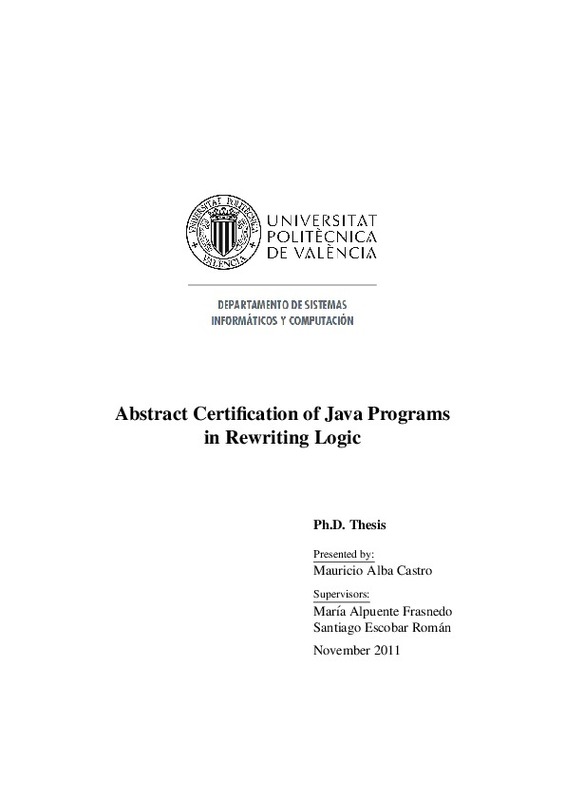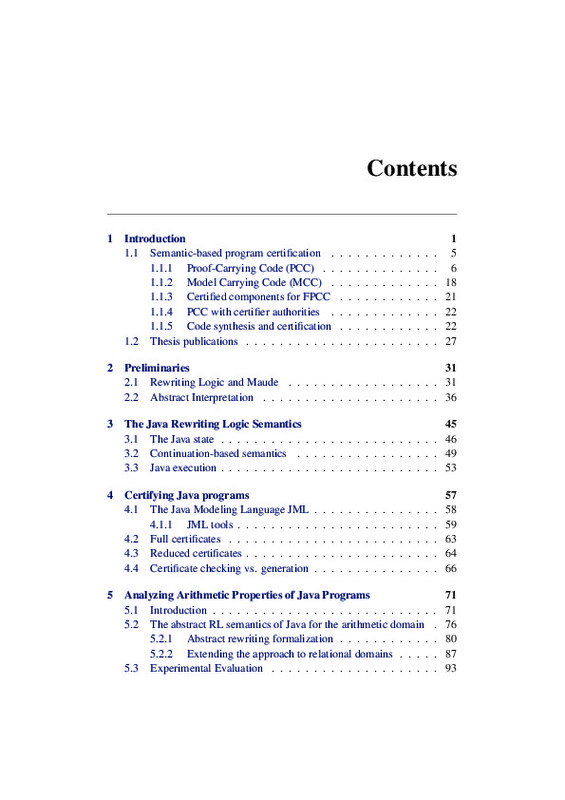- RiuNet repositorio UPV
- :
- Investigación
- :
- Tesis doctorales
- :
- Ver ítem
JavaScript is disabled for your browser. Some features of this site may not work without it.
Buscar en RiuNet
Listar
Mi cuenta
Estadísticas
Ayuda RiuNet
Admin. UPV
Abstract Certification of Java Programs in Rewriting Logic
Mostrar el registro completo del ítem
Alba Castro, MF. (2011). Abstract Certification of Java Programs in Rewriting Logic [Tesis doctoral]. Universitat Politècnica de València. https://doi.org/10.4995/Thesis/10251/13617
Por favor, use este identificador para citar o enlazar este ítem: http://hdl.handle.net/10251/13617
Ficheros en el ítem
Metadatos del ítem
| Título: | Abstract Certification of Java Programs in Rewriting Logic | |||
| Autor: | Alba Castro, Mauricio Fernando | |||
| Director(es): | ||||
| Entidad UPV: |
|
|||
| Fecha acto/lectura: |
|
|||
| Resumen: |
In this thesis we propose an abstraction based certification technique for Java programs which is based on rewriting logic, a very general logical and semantic framework efficiently implemented in the functional programming ...[+]
|
|||
| Palabras clave: |
|
|||
| Derechos de uso: | Reserva de todos los derechos | |||
| DOI: |
|
|||
| Editorial: |
|
|||
| Tipo: |
|
recommendations
Este ítem aparece en la(s) siguiente(s) colección(ones)
-
Tesis doctorales [5389]







![Text file [Text]](/themes/UPV/images/text.png)



